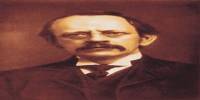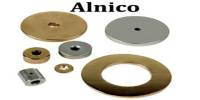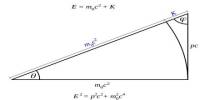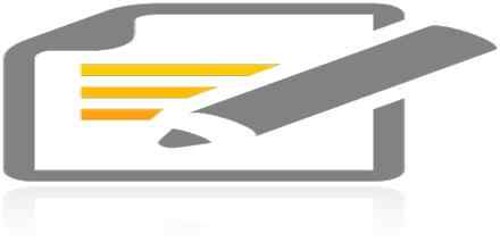Quantum data conversion actually refers to the process of translating information between different types of quantum information, such as from one quantum computing platform to another. It can also refer to the process of converting classical data into a format that can be processed by a quantum computer, or vice versa.
Researchers at the Kastler Brossel Laboratory in Paris have succeeded in building the first converter between the two different types of quantum-bit encodings an equivalent to converters for classical information, but targeted to different types of quantum data.
The interconnectivity of future networks may be made possible by this high-quality rewriting of information, which paves the path for bridging the divide between the several competing platforms in the race for quantum computing.
In the February online issue of Nature Photonics, Prof. Julien Laurat and his colleagues at LKB (Sorbonne Université, CNRS, ENS-Université PSL, Collège de France) reported on the first successful demonstration of faithful qubit-encoding conversion. The quantum realm enables two different ways in which information can be stored and processed, discrete and continuous variables.
They are preferred for specific jobs and platforms, much as traditional analog or digital information encodings. Researchers at LKB have demonstrated the feasibility of connecting various quantum devices by discovering a technique to transfer one extremely distinct flavor of quantum information to another.
There are now many platforms being developed in the race for quantum computing that rely on various quantum systems, including photons, neutral atoms, ions, superconductors, and semiconductors.
There are various encoding types for all of these systems, and the decision relies on the particular applications and resource availability. It is crucial to address this variability in quantum networks. For networks to be more reliable and effective, it would enable the integration of each technology’s finest qualities.
It is amazing to think that with the technology of just ten years ago this task would have been nearly impossible. It’s a very exciting time to see that advancing our fundamental understanding of the quantum realm is pushing our technological boundaries.
Beate Asenbeck
Early consideration of heterogeneity in the design of quantum networks helps avoid compatibility problems and enable future smooth integration and interconnectivity of many quantum devices. A quantum encoding converter is needed for this purpose because it can change the foundation on which information is written while still preserving the delicate quantum information signal.
Quantum bit conversion is a complex challenge. Measuring data contained in one encoding and recreating this data in the other encoding would be the simple method of making a converter. Unfortunately, this process for arbitrary information is not possible due to quantum mechanics and the so-called no-cloning theorem.
In a way, this drawback is a blessing in disguise because it allows for the use of quantum cryptography’s strength. Nonetheless this forced the team at LKB to take another route in order to create a converter: using quantum entanglement.
Entanglement describes non-classical correlations between quantum systems. It was described by Einstein as a “spooky action at a distance.” This strange behavior, which first caused a lot of uncertainty in the community, is now the foundation of numerous suggestions in the quantum research community. It is the protagonist of this year’s 2022 Nobel Prize in Physics, and at the heart of the current quantum revolution.
“In fact, the second quantum revolution, also known as the era of quantum technologies, is driven by the ability to harness and control entanglement at the quantum level. The ability to create, manipulate and distribute entanglement opens the door to many new applications and technologies that cannot be achieved with classical systems alone,” states Tom Darras, the first author of the study, now CEO and co-founder of the quantum startup Welinq.
The qubit converter implementation can be broken down into three main steps. Firstly, the key resource, entanglement, has to be created. Secondly, the input qubit is sent to the converter.
Lastly, a special measurement, called “Bell-state measurement,” must be performed, resulting in the teleportation of the input information to the output qubit. The qubit has been rewritten into another basis in this operation, which is a stark contrast to other teleportation techniques.
The researchers in Paris used highly effective nonlinear optical sources called optical parametric oscillators to produce all resource states. Depending on the crystal they used, these sources produced high purity single photon or optical cat states upon a heralding event. They also relied on high-efficiency superconducting single-photons detectors.
To succeed, this process required a very specific kind of resource optical entanglement, a “hybrid-entangled state” between a so-called discrete-variable qubit and a continuous-variable Schrödinger cat qubit.
The single-photon component of the hybrid entanglement is made to interfere with the input qubit in order to permit a Bell-state measurement, which is followed by a boosted single-photon detection. A common technique to rate the effectiveness of a process is to characterize the output qubit for verification using a procedure called “quantum tomography” to determine the fidelity between the input and output qubits. Conversion above the classical limit was confirmed for any input qubit.
“The success of this process is an important milestone for quantum technology infrastructures. Once we can interconnect quantum devices, more complex and efficient networks can be built.” says Beate Asenbeck, a Ph.D. student at LKB and one of the leading authors of the paper.
“It is amazing to think that with the technology of just ten years ago this task would have been nearly impossible. It’s a very exciting time to see that advancing our fundamental understanding of the quantum realm is pushing our technological boundaries.”
















